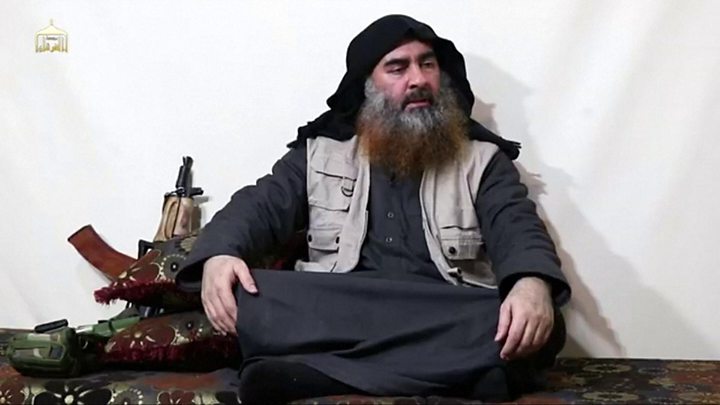ISIS Leader Abur Bakr al-Baghdadi Killed in U.S. Raid
December 15, 2019
Although the terrorist group ISIS has instilled fear into the hearts of people around the globe for years, recent military events have proven that the group is far from untouchable. In late October, a U.S. military operation struck a hard blow to the terrorist group, resulting in the death of ISIS leader Abu Bakr al-Baghdadi.
On October 26, at about 5:00 p.m, eight helicopters brought U.S. troops to a compound in Northwest Syria, where Baghdadi was staying (It is believed that Baghdadi was making his way to Turkey to go into hiding with his family). The ground team breached the walls of the compound, as the entrance was thought to have been booby-trapped, and followed the K-9s they sent into the base. After nearly two hours of conflict, special operation forces declared Baghdadi dead after being cornered into a tunnel and detonating his suicide vest. His remains were taken for DNA confirmation, and once all ground forces were clear of the area, U.S. forces employed precision standoff munitions to blow up the compound, reducing it to rubble. This was done to prevent the making of any shrines or commemorations in the name of the former ISIS leader. President Donald Trump did not notify Congressional leadership prior to the raid, paralleling former President Barack Obama’s decision when Osama bin Laden was killed in 2011.

Including Baghdadi, a total of six ISIS members died. Two of his children, caught in the blast from Baghdadi’s suicide, were also killed. However, eleven children were protected and removed from the house, and two ISIS fighters were detained.
Along with U.S. military forces, the Kurdish-led Syrian Democratic Forces (SDF) played a vital role in the operation. An SDF informative deep inside Baghdadi’s inner circle provided a detailed layout of the compound, which was relayed to the CIA. The SDF was also responsible for obtaining a DNA sample that helped confirm that the remains recovered from the tunnel were in fact Baghdadi’s. Donald Trump thanked the Kurds in a public statement, along with multiple other nations that helped in the raid.
Shortly after the raid, Donald Trump Tweeted a declassified picture of one of the military working dogs that participated in the operation. The dog was injured during the mission, having been electrocuted by an exposed power chord, but is reportedly undergoing a healthy recovery. The K-9’s name is classified due to the fact that it is still active in the military.
Abur Bakr al-Baghdadi’s dramatic death carries a lot of weight with it; many are considering it to be a detriment to the organization of ISIS and its composition. Having founded the terrorist group in 2014 and leading it since, Baghdadi maintained an unfortunately devastating system, managing to control large portions of Iraq and Syria, and recruiting people into the terrorist group as far as northern Africa, and even collecting taxes in some places. The leader’s death will definitely have repercussions for ISIS, sending the organized group into disarray. However, there are still an estimated fifteen thousand ISIS fighters in Syria, and various informants in other countries.
General Kenneth McKenzie has stated that U.S. command forces will continue to direct their focus on ISIS. Although the fight is far from over, the U.S. and accompanying forces appear to be gaining the upper hand.

